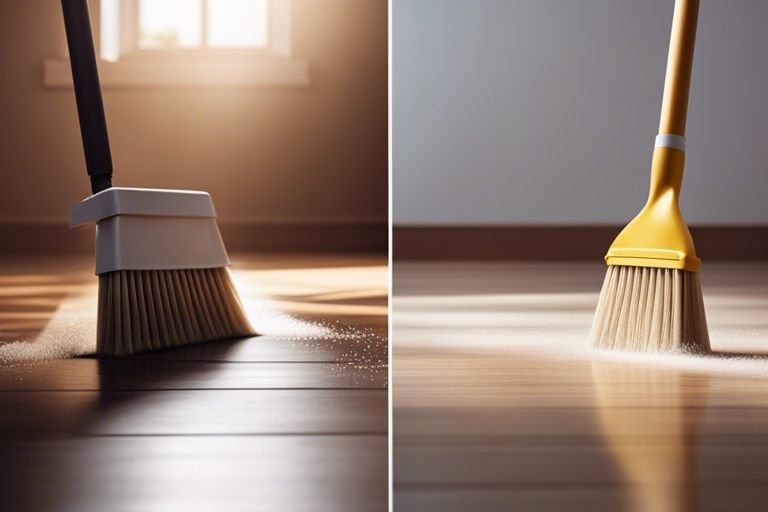Embarking on a home makeover can be an exhilarating and daunting task. The paint color you choose can dramatically transform the look and feel of your home. But have you ever wondered, “Does paint change color when it dries?” The answer is, yes, it does. As a professional painter, I have seen many homeowners disappointed when the color on their walls dries to a different shade than expected. This can be a frustrating and costly mistake if you’re not prepared. In this blog post, I will explain why paint changes color when it dries, what to expect during the drying process, and how you can ensure you get the exact color you want for your home makeover. Understanding these important details will help you make informed decisions and achieve the positive results you desire.
Key Takeaways:
- Paint color may change when it dries due to various factors such as lighting, surface texture, and type of paint. It’s important to test your paint on a small section before proceeding with a large area.
- Be patient when waiting for paint to dry. The color may appear slightly different once it has completely dried, so give it time before making any final judgments.
- Consider the sheen level of the paint. Different sheens can affect how the color looks when dry, so take this into account when choosing your paint for a home makeover.
- Preparation is key for a successful home makeover. Make sure to properly clean and prime your walls before painting to ensure the true color of the paint is displayed when dry.
- Consult with a professional if you’re unsure about how a certain paint color will look when dry. They can provide expert advice and guidance to help you achieve the desired look for your home makeover.
Understanding How Paint Dries
Before we delve into the actual color change of paint as it dries, it’s important to understand the process of how paint dries in the first place. When you apply paint to a surface, it initially contains a high level of solvents that keep the paint in a liquid state. As these solvents evaporate, the paint begins to dry, eventually forming a solid coating on the surface.
Chemical Reactions
One of the key processes that occur as paint dries is the chemical reaction that takes place within the paint. This reaction causes the molecules in the paint to bond together, forming a durable coating. As the paint dries, the pigments and binders in the paint undergo this reaction, leading to the transformation of the liquid paint into a solid film.
Evaporation of Solvents
During the drying process, the solvents within the paint gradually evaporate into the air. This evaporation plays a crucial role in the drying process, as it allows the paint to transition from a liquid to a solid state. As the solvents evaporate, the volume of the paint decreases, leading to the formation of a dry, solid coating on the painted surface.
Factors That Can Affect Color Change
Any number of factors can contribute to the color change you may experience when paint dries. Some of these include:
- Type of paint
- Temperature and humidity
- Application technique
After considering these factors, you can better understand what to expect when completing your home makeover.
Type of Paint
When it comes to paint, the type you choose will greatly impact the color change you see after it dries. Pigment concentration and the type of binders used can affect how paint looks when it dries. For example, oil-based paints tend to darken as they dry, while water-based paints can dry to a slightly lighter shade. Keep this in mind when selecting your paint to ensure the color dries to your desired result.
Temperature and Humidity
Temperature and humidity play a significant role in how paint dries. Higher temperatures and lower humidity can lead to faster evaporation of water or solvents in the paint, affecting the color change. On the other hand, cooler temperatures and higher humidity can slow down drying and potentially alter the final color. Be mindful of these environmental factors when planning your painting project.
| Temperature | Effect on Paint Color |
| Higher | Darker color |
| Lower | Lighter color |
Application Technique
The way you apply the paint can also impact its final color. The thickness of the coat, the number of coats, and the use of different tools like brushes and rollers can all influence color change when the paint dries. Make sure to follow manufacturer’s instructions for best results and consider consulting a professional if you’re unsure about the application technique.
Tips for Choosing and Using Paint
Unlike what many people assume, choosing the right paint goes beyond just picking your favorite color. Before you start painting, consider factors such as the surface type, the amount of natural light the room receives, and the overall mood you want to create. I recommend purchasing a small sample can of the paint you’re considering and trying it out on a small section of the wall to see how it looks in different lighting conditions before committing to a full gallon. When it comes to using paint, selecting the right tools is just as important as choosing the right color. Investing in high-quality brushes, rollers, and painter’s tape will make the application process much smoother and help you achieve a professional-looking finish. Additionally, always follow the manufacturer’s instructions on the paint can for best results. Assume that the guidelines for drying times and application techniques are there for a reason, and it’s important to adhere to them for optimal results.
Using Primer
Using a primer before applying paint is essential for achieving the best results. Not only does it provide a smooth and even base for the paint to adhere to, but it can also help improve the coverage and durability of the paint. Before you start painting, make sure the surface is clean and free of any dust or debris. Apply the primer evenly, using a high-quality brush or roller, and allow it to dry completely before applying the paint. This will help ensure that the color of the paint appears true to the swatch and that the paint adheres properly to the surface.
Optimal Drying Conditions
When it comes to painting, drying conditions can significantly impact the final color of the paint. Ideally, you should paint in a well-ventilated area with moderate temperatures and low humidity. Extreme heat or cold can affect the drying time and the final appearance of the paint. Additionally, it’s essential to allow the paint to dry completely between coats to avoid any color discrepancies. I recommend checking the manufacturer’s instructions for the recommended drying conditions and adjusting your painting schedule accordingly.
Monitoring Color Changes
As the paint dries, it’s essential to monitor color changes to ensure that the final result matches your expectations. Keep in mind that paint often appears lighter when wet and may darken as it dries. I recommend painting a test patch on the wall and allowing it to dry completely before making a final decision. This will give you a better idea of how the color will look once the entire wall is painted, and it can help you adjust your color choice if necessary.
How to Manage Color Changes During Your Home Makeover
To ensure that your home makeover goes smoothly and you achieve the color you desire, you need to manage the potential color changes that can occur during the painting process. Here are some tips to help you navigate this aspect of your home makeover.
Choosing the Right Color
When selecting a paint color for your home, it’s important to consider how the color may appear once it dries. Keep in mind that the wet paint may look darker or lighter than its true, dried color. To avoid any surprises, I recommend obtaining a sample of the paint and applying it to a small area of the wall to see how it dries. This will give you a more accurate representation of the color you can expect once the paint is fully dry.
Touching up Dried Paint
After the paint has dried, you may notice that the color doesn’t quite match what you had envisioned. In this case, it’s essential to touch up the dried paint to achieve the desired color. When doing so, it’s crucial to use the same type and shade of paint to maintain a consistent color throughout the room. Additionally, I recommend blending the new paint into the existing paint to ensure a seamless, uniform appearance.
I advice you to be cautious when choosing a new color to touch up a previous color that might not be as difficult to get a correct match.
It is important to remember that paint colors can undergo subtle changes as they dry, and it’s essential to take this into account when planning your home makeover.

Conclusion
From above discussion, it is clear that paint does change color when it dries. This is due to the evaporation of the solvents and the settling of the pigments, which can alter the color slightly. When planning your home makeover, it is important to keep this in mind and choose a shade that will dry to the desired color. Additionally, it is important to consider the lighting in your home, as this can also affect how the paint color appears. By considering these factors, you can ensure that your home makeover results in the perfect, desired color for your space.
FAQ
Q: Does paint change color when it dries?
A: Yes, paint typically does change color as it dries. This is because the wet paint has a different appearance than when it has fully dried and cured. It is important to test the color on a small area before committing to a larger project to ensure you are happy with the final result.
Q: What can affect the color change in paint when it dries?
A: Several factors can affect the color change in paint when it dries, including the type of paint, the surface it is applied to, and the lighting in the room. Different paint formulas may react differently when drying, and the color may also appear different depending on the texture and color of the surface it is applied to. Additionally, natural and artificial lighting can also impact the appearance of the paint color.
Q: How long do I have to wait to see the true color of the paint after it dries?
A: It is recommended to wait at least 24 hours for the paint to fully dry and cure before assessing the true color. Factors such as humidity, temperature, and the type of paint can affect the drying time. Waiting for the paint to fully cure will give you the most accurate representation of the color.
Q: What should I expect during my home makeover with paint?
A: During a home makeover with paint, you can expect to first prepare the surfaces by cleaning, sanding, and priming as needed. Next, you will apply the paint in the desired color and finish, such as matte, satin, or gloss. It is important to allow sufficient drying time between coats, and to be mindful of proper ventilation and safety precautions.
Q: Is it necessary to use primer before painting during a home makeover?
A: While it is not always necessary to use primer before painting, it is highly recommended, especially when painting over a drastically different color or a glossy surface. Primer helps the paint adhere better to the surface, provides a more even finish, and can help with color accuracy. In some cases, using a primer can also save time and money by requiring fewer coats of paint.




